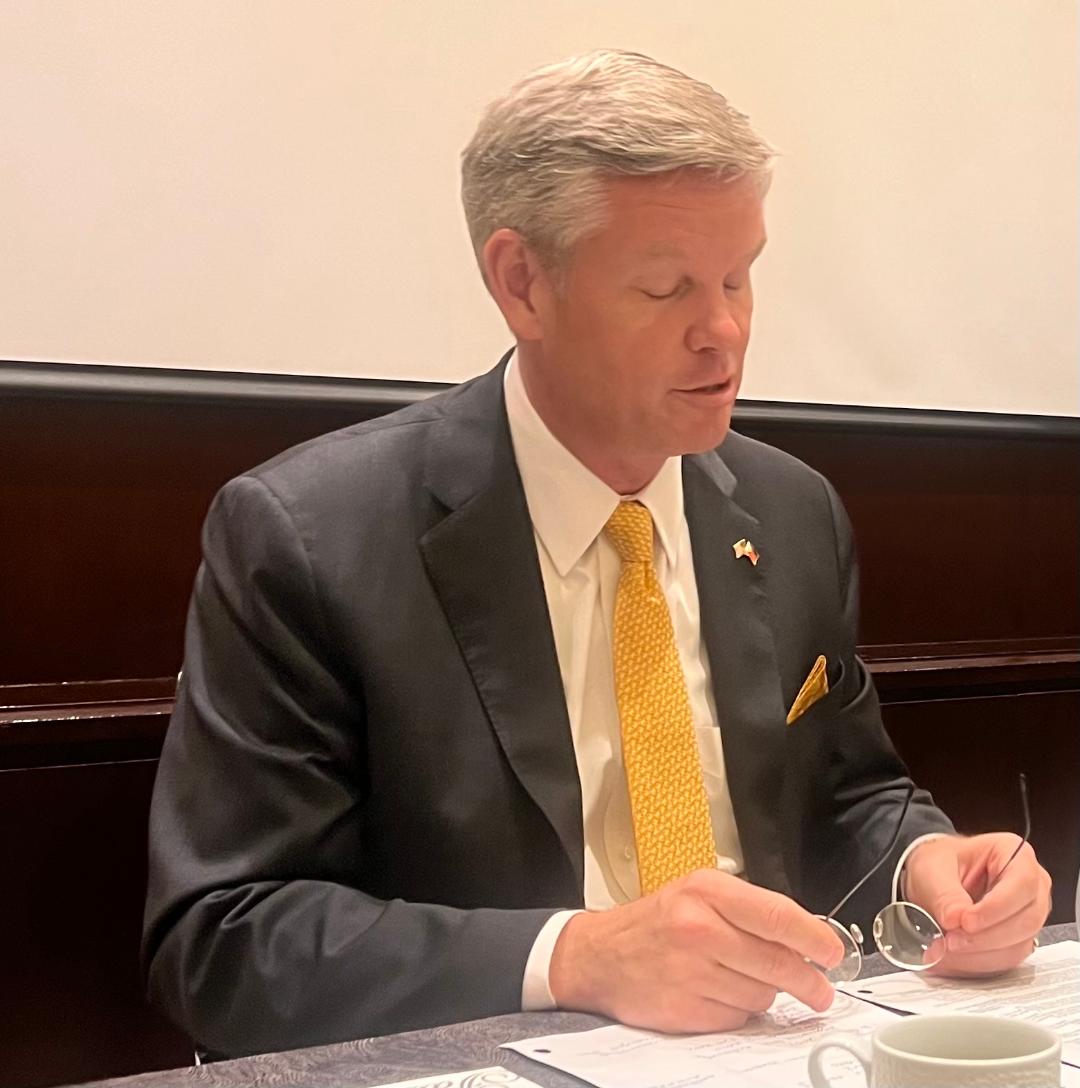US amenable to 'spent fuel take-back deal' on nuclear power tech deployment
At A Glance
- The policy and regulatory frameworks being pushed in the Philippines will be a 'cradle-to-grave' precept – which entails addressing the entire supply chain of nuclear power development from the provision of fuel, to technology adoption or deployment, licensing, construction and the more contentious part of waste management and disposal.
The US government is amenable to firming up an agreement on taking back ‘spent fuel’ that had already been irradiated once fissioned or burnt in reactor for nuclear technologies that American suppliers will be deploying to the Philippines.
In a roundtable discussion with the Philippine media, US Nuclear Regulatory Commission Chairman Christopher T. Hanson stated “an agreement that might involve fuel take-back, I think that would have to be potentially worked out between the two governments.”

Visiting US Nuclear Regulatory Commission Chairman Christopher T. Hanson
He expounded “that can work, but it might also be part of the technology selection process here in the Philippines – with regard to how can the waste be managed,” stressing that in the US, “we safely manage over almost 90,000 metric tons of spent nuclear fuel at reactor sites and other central storage sites around the country – so it can be done.”
The American chief nuclear regulator added “we have licensing and inspection procedures for that waste – for that spent fuel; and we’re of course absolutely happy to and prepared to share that experience and that expertise with our Filipino colleagues.”
Hanson qualified there are varying degrees of wastes resulting from nuclear applications – and to some extent, there is low-level waste, and the one needing more rigid degree of handling and management as well as eventual permanent disposal would be the spent fuel, also considerably known as ‘high level waste’.
The policy and regulatory frameworks being pushed in the Philippines will be a ‘cradle-to-grave’ paradigm – which entails addressing the entire supply chain of nuclear power development from the provision of fuel, to technology adoption or deployment, licensing, construction and the more contentious part of waste management and disposal.
For licensing alone, this is multi-layered exercise to be carried out by regulators and that will take almost a decade to be completed in various countries that have added nuclear power in their respective energy mix – that will be from the licensing of the technology, then for construction; and then for decommissioning and waste management.
Typically, some countries will take 3-5 years to license a new nuclear reactor before they can be deployed for commercial use – be it domestically or in offshore markets. And the take-off point for the licensing process will be a successful outcome of pilot or demonstration projects.
Specifically for the small modular reactors (SMRs) that are now being experimented on in various parts of the world, it was noted that the first licensing for a reactor prior to commercial rollout could take place by 2028 to 2030, including those that are currently being pioneered in the US market.
Hanson emphasized that if the reactor is already licensed in the US, “we are prepared to share our work with not just our Philippine counterparts, but other countries as well.”
He specified “we can show how we went through that licensing process and performed the technical and confirmatory analysis to reach our determination.”
The prospective nuclear regulators in the Philippines, in particular, are currently contemplating a ‘technology design review’, instead of undertaking a re-licensing process for the supplied nuclear reactors.
“I want to really stress that it is important and it’s my goal to help support and develop regulatory bodies in the Philippines and in other countries who are capable of performing those analysis themselves,” Hanson stressed.
The American regulator highlighted the importance of ‘mutual collaboration’ between the supplier-country and the end-user market when it comes to ensuring the safety of the nuclear technology that shall be installed at civilian nuclear facilities.
“It’s important for public credibility and public trust for people to be able to see their own government having said: we did this work too – and we think, a particular technology is safe,” he asserted.
Licensed nuclear reactors used in power plants will essentially have 40-year operating life cycle; and that could still be stretched for as long as 60 to 80 years, according to Hanson.